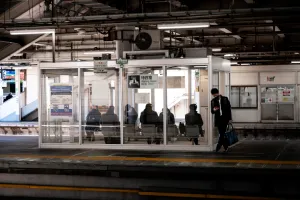Complexities in Large Venues (Stadiums, Transport Hubs)
Working as a Security Control Room (SCR) Operator in large venues such as stadiums, airports, train stations, or shopping centres presents unique challenges. These environments are dynamic, crowded, and often host thousands of people at any one time. Your role is to maintain control, ensure safety, and support compliance with UK security standards while managing a constant flow of information, incidents, and communications.
Large venues operate under complex systems, from CCTV and access control to crowd management and emergency response coordination. As an SCR Operator, your awareness, judgement, and ability to stay calm under pressure make all the difference.
Understanding the Scale and Challenges
In smaller sites, incidents are often localised and easier to manage. However, in large venues, several complexities come into play:
Crowd Density: With thousands of people moving through entrances, concourses, and exits, it’s harder to spot suspicious behaviour or respond quickly to emergencies.
Multiple Access Points: Stadiums and transport hubs have numerous doors, gates, and restricted zones that require constant monitoring and coordination.
Dynamic Events: Matches, concerts, rush hours, or flight delays can change risk levels instantly.
Public Interaction: Members of the public may panic, ignore instructions, or flood communication lines during emergencies.
Multiple Agencies: You will often liaise with police, emergency services, and event management teams, making coordination crucial.
Example: During a major football match, a control room operator may monitor hundreds of cameras while simultaneously handling crowd movement reports, coordinating with stewards, and responding to medical incidents. Managing this effectively requires both technical skill and strong communication discipline.
Communication Under Pressure
Large venues rely on flawless communication. During high-pressure events, the control room becomes the command centre for all information.
Keep messages short, clear, and calm.
Use pre-agreed codes or call signs to avoid confusion over open radio channels.
Always confirm and record instructions, times, and incident details.
Scenario Example: During a delayed train departure at a major station, a growing crowd begins to form near the barriers. A calm and clear message from the control room directing officers to manage flow and open a secondary gate prevents escalation and potential injury.
Tip: In stressful situations, breathe before transmitting and use a steady tone. The calmer your voice, the more confident others will feel.
Technology and Monitoring Systems
Large venues often use advanced technology that must be handled with precision. This includes:
CCTV with intelligent analytics for crowd density or suspicious activity detection.
Integrated access control systems for restricted zones.
Public address systems for emergency communication.
Incident management software that logs every event and supports data-driven reporting.
Key Consideration: Ensure you are familiar with all control systems before taking charge of a shift. Testing and understanding the technology reduces the chance of errors in critical moments.
Real-World Example: The Stadium Power Failure
Imagine you are operating the control room during a high-profile football match. The stadium suddenly experiences a partial power failure, leaving several stands in darkness.
Here’s how you should respond:
Identify: Quickly confirm the affected areas using CCTV and building management systems.
Communicate: Inform on-site security teams and event control using a pre-scripted emergency message.
Coordinate: Dispatch stewards with torches to assist spectators and prevent panic.
Monitor: Keep CCTV focused on exits and concourses to identify crowd movement or disorder.
Liaise: Contact facility management and local police if necessary, maintaining real-time updates.

Outcome: Because of calm, coordinated control room action, no injuries occur and the match resumes safely once power is restored.
Tip: In large venues, fast decisions, clear communication, and technical understanding can prevent chaos.
Statistics That Matter
The UK hosts over 1,000 large-scale events every year, many attracting crowds of 10,000+ people.
According to the SIA Annual Report, more than 65 percent of reported control room incidents in large venues are linked to communication failures or unclear command structures.
Studies from the BSI Group indicate that venues using integrated monitoring systems reduce incident escalation times by 40 percent.
These numbers underline the importance of professional control room operations, consistent training, and strict adherence to UK standards.
Common Mistakes to Avoid
Ignoring small alerts due to information overload.
Failing to verify reports before escalating.
Using personal judgement instead of following site procedures.
Overlooking minor maintenance issues with control room equipment.
Tip: Always perform pre-event equipment checks and keep your event-specific action plan easily accessible.
Consequences of Poor Control Room Management
If procedures are not followed correctly in a large venue, the consequences can be serious:
Legal Liability: Non-compliance with the SIA or Health and Safety at Work Act can result in prosecution.
Financial Penalties: Venues and contractors can face fines for breaching safety regulations.
Reputational Damage: Public trust is easily lost after a poorly handled incident.
Injury or Loss of Life: The ultimate and most tragic outcome of ineffective control room operations.
Remember: Every second counts, and every action taken inside the control room has real-world consequences outside it.
Tips for Success in Large Venues
Know Your Layout: Memorise key zones, exits, and evacuation routes.
Stay Calm and Focused: Fatigue and stress can cloud judgement, so rotate monitoring tasks where possible.
Build Strong Communication Links: Trust your officers and ensure mutual clarity in every transmission.
Keep Learning: Review previous incidents and learn from both successes and mistakes.
Maintain Professional Standards: Always align your actions with SIA, ACS, BSI, and NSI expectations.
Real-World Reflection: Transport Hub Bomb Scare
At a major UK train station, a passenger reports a suspicious package left on a bench during morning rush hour. Within minutes, the control room initiates a partial lockdown, halts incoming trains, and notifies police and emergency services. The operator coordinates evacuation routes via PA systems, monitors crowd movement on CCTV, and provides live updates to responders.
Outcome: The area is cleared safely, and the package is found to be non-threatening.

Tip: A fast, compliant response based on established standards protects public safety, maintains order, and upholds the venue’s professional reputation.
Staying Vigilant in Large Venues
As an SCR Operator, your attention, communication, and decision-making skills directly influence the safety of thousands of people. Large venues are complex, fast-moving environments, but with proper training, adherence to UK standards, and a calm, structured approach, you can ensure smooth operations even under pressure.
Remember: Preparedness, professionalism, and compliance are the cornerstones of effective control room operation in complex environments.

